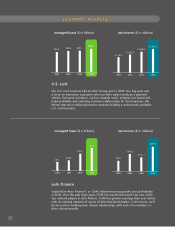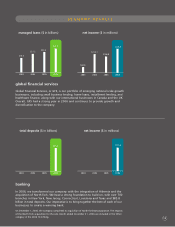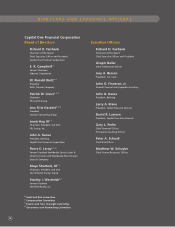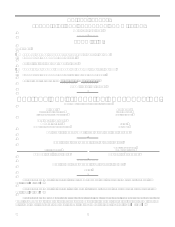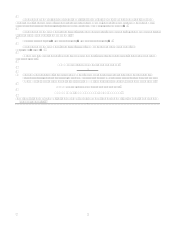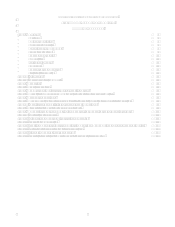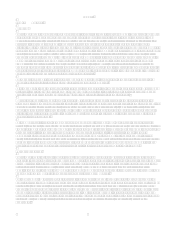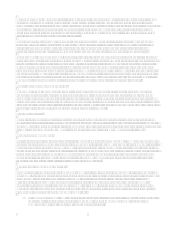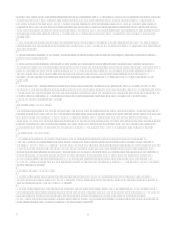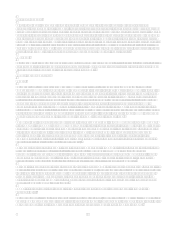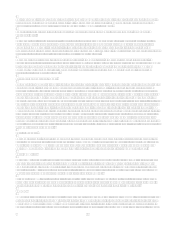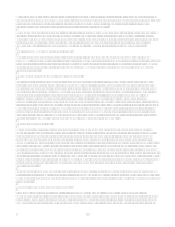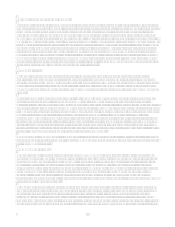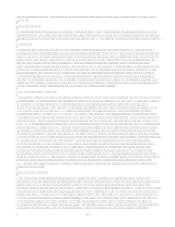Capital One 2006 Annual Report Download - page 24
Download and view the complete annual report
Please find page 24 of the 2006 Capital One annual report below. You can navigate through the pages in the report by either clicking on the pages listed below, or by using the keyword search tool below to find specific information within the annual report. 6
Auto Finance Segment. We purchase retail installment contracts, secured by automobiles or other motor vehicles, through
dealer networks throughout the United States. Additionally, we utilize direct marketing, including the internet, to offer
automobile financing directly to consumers. Our direct marketed products include financing for the purchase of new and used
vehicles, as well as refinancing of existing motor vehicle loans. As of December 31, 2006, we are the third largest non-
captive provider of auto financing in the United States. One of our competitive advantages is that we are able to provide
credit to customers with a wide range of credit profiles.
Global Financial Services Segment. The Global Financial Services segment consists of international (UK and Canada)
lending, small business lending, installment loans, home loans, healthcare finance and other consumer financial service
activities, extending Capital Ones national scale lending franchise and providing geographic diversification. In our
international businesses, we utilize the methodologies and approaches similar to those we use in the United States.
Banking Segment. The Banking segment represents the results of the legacy Hibernia business lines except for the indirect
auto business, which is included in the Auto Finance segment results, and the investment portfolio results which are included
in the Other category. In addition, the Banking segment includes the results of the Companys branchless deposit business
which were previously included as part of the Other category. The Banking segment offers traditional banking products
through an extensive branch network. Products include commercial and consumer loans, commercial and consumer deposit
account services, commercial credit cards, treasury management services, trust services and other banking related products,
such as insurance, brokerage services, merchant services, and investment banking. In addition, the Banking segment offers
money market (liquid accounts) and certificate of deposit accounts (time deposits) through internet channels.
Acquisition of North Fork Bancorporation
On December 1, 2006, we completed our acquisition of North Fork Bancorporation, a financial holding company that
provides a wide array of financial products and services through its bank and non-bank subsidiaries. Under the merger
agreement, North Fork merged with and into the Corporation, and Capital One continued as the surviving corporation. We
are focused on successfully integrating North Fork Bancorporation into the Corporation, and beginning with the first quarter
of 2007, we will begin reporting its activities in our business segments. For the year ended December 31, 2006, North Forks
financial results are included in the Other category in our financial statements.
Geographic Diversity
Loan portfolio concentration within a specific geographic region may be regarded differently based upon the current and
expected credit characteristics and performance of the portfolio. Our loan portfolio is geographically diverse, although we do
have commercial lending concentrations in the New York metropolitan area and Louisiana. See page 109 in Item 8 Financial
Statements and Supplementary DataNotes to the Consolidated Financial StatementsNote 24 of this form.
Enterprise Risk Management
Risk is an inherent part of our business and activities. We have an Enterprise Risk Management (ERM) program designed to
ensure appropriate and comprehensive oversight and management of risk. The ERM program has three components. First, the
Board of Directors and senior management committees oversee risk and risk management practices. Second, the centralized
department headed by the Chief Risk Officer establishes risk management methodologies, processes and standards. Third, the
individual business areas throughout the Company are responsible for managing risk in their businesses and performing
ongoing identification, assessment and response to risks. Our ERM framework includes eight categories of risk: credit,
liquidity, market, operational, legal, strategic, reputation, and compliance.
Board and Senior Management Oversight
A combination of the Board and senior management committees is used to oversee the management of risk. The Audit and
Risk Committee of the Board of Directors oversees our accounting, financial reporting, internal controls and risk assessment
and management processes. The Audit and Risk Committee also reviews periodic reporting on significant risks and
mitigation activities and compliance with corporate risk policies. The Board Finance and Trust Oversight Committee
oversees liquidity and market risk. The Executive Committee, a committee of senior management chaired by the Chief
Executive Officer, provides guidance to senior executives regarding strategic risk and provides an integrated view of risk
through reports by our other senior management committees:
Risk Management Committeeis chaired by the Chief Risk Officer and provides a forum for senior executives to
have a regular, integrated discussion of risk management. The Risk Management Committee focuses on
Compliance, Operational, Reputational, Legal and Strategic risks.


